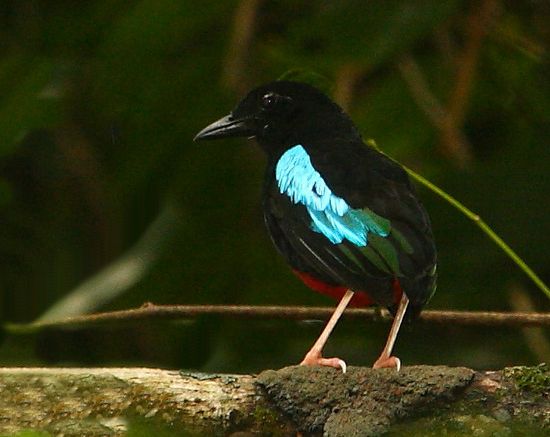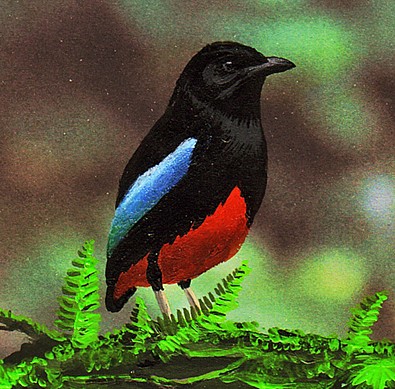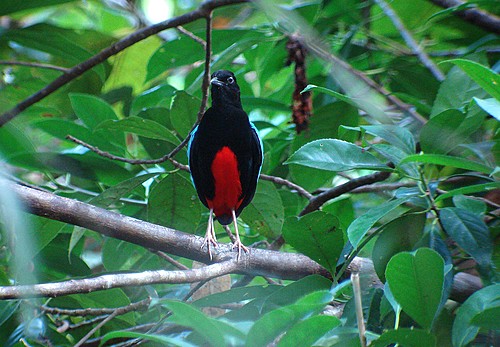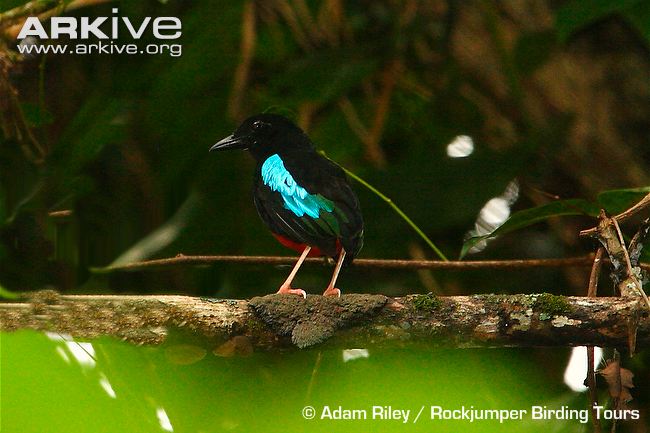
Pitta superba
TAXONOMY
Pitta superba Rothschild and Hartert, 1914, Manus Island, Admiralty
Islands.
OTHER COMMON NAMES
English: Black-backed pitta; French: Brиve superbe; German:
Mohrenpitta; Spanish: Pita Soberbia.
PHYSICAL CHARACTERISTICS
8.5 in (21–22 cm); c. 3.5–4.6 oz (100–130 g). Black head,
wings, upperparts, and underparts to chest. Red under abdomen
and tail; white bands on wings.
DISTRIBUTION
Island of Manus, Admiralty Islands.
HABITAT
Forested and wooded habitats, including primary forest, secondary
forest, bamboo, and scrub.
BEHAVIOR
Poorly known, but assumed to be similar to other pittas. Terrestrial
and secretive, occurring alone or in pairs. Territorial,
responds to playback of its call.
FEEDING ECOLOGY AND DIET
Reported to feed on snails and smash them on stone “anvils.”
REPRODUCTIVE BIOLOGY
Probably breeds year round, as do other forest birds of Manus.
Single nest was dome-shaped; constructed from roots, leaves
(including bamboo), and twigs; and contained two eggs. Eggs
white with purplish gray and purplish brown spots, more numerous
on the widest end.
CONSERVATION STATUS
Because this species is restricted to the island of Manus, the total
population size is very small and the species is considered
Vulnerable.
SIGNIFICANCE TO HUMANS
None known.
Photo Gallery of - Superb pitta




 Animalia Life
Animalia Life